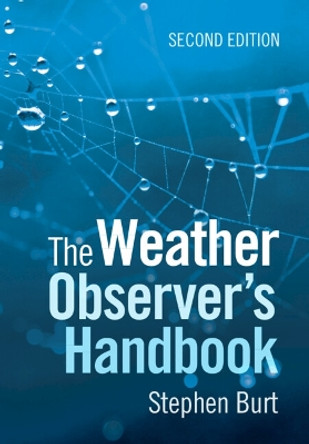Description
Few poetic forms have found more uses than the sonnet in English, and none is now more recognizable. It is one of the longest-lived of verse forms, and one of the briefest. A mere fourteen lines, fashioned by intricate rhymes, it is, as Dante Gabriel Rossetti called it, "a moment's monument." From the Renaissance to the present, the sonnet has given poets a superb vehicle for private contemplation, introspection, and the expression of passionate feelings and thoughts.
The Art of the Sonnet collects one hundred exemplary sonnets of the English language (and a few sonnets in translation), representing highlights in the history of the sonnet, accompanied by short commentaries on each of the poems. The commentaries by Stephanie Burt and David Mikics offer new perspectives and insights, and, taken together, demonstrate the enduring as well as changing nature of the sonnet. The authors serve as guides to some of the most-celebrated sonnets in English as well as less-well-known gems by nineteenth- and twentieth-century poets. Also included is a general introductory essay, in which the authors examine the sonnet form and its long and fascinating history, from its origin in medieval Sicily to its English appropriation in the sixteenth century to sonnet writing today in the United States, the United Kingdom, and other English-speaking parts of the world.
Burt and Mikics have a ravishing breadth of taste and understanding. Their capaciousness allows the sonnet greater variety than its enemies (who think it old-fashioned, retrograde, and reactionary) would allow. A literary tour de force. -- Willard Spiegelman, author of Seven Pleasures: Essays on Ordinary Happiness Burt and Mikics have gathered together and composed a marvelous book. Both of them give us profound commentaries on particular sonnets and on the genre. I know of no other recent book that so steadily illuminates the riches it invokes. -- Harold Bloom
About the Author
Stephanie Burt is Professor of English at Harvard University. David Mikics is John and Rebecca Moores Professor of English at the University of Houston.
Reviews
Burt and Mikics have a ravishing breadth of taste and understanding. Their capaciousness allows the sonnet greater variety than its enemies (who think it old-fashioned, retrograde, and reactionary) would allow. A literary tour de force. -- Willard Spiegelman, author of Seven Pleasures: Essays on Ordinary Happiness
Burt and Mikics have gathered together and composed a marvelous book. Both of them give us profound commentaries on particular sonnets and on the genre. I know of no other recent book that so steadily illuminates the riches it invokes. -- Harold Bloom
Burt and Mikics have written an illuminating text that promises many hours of reading pleasure and greater understanding of this poetic form. -- Susan L. Peters * Library Journal *
Learned as well as passionate, this book is a delight. * Publishers Weekly (starred review) *
A carefully selected set of 100 sonnets, spanning 1557 to 2009, each with a compact companion essay. [The editors'] aim is to present 'a partial history of the sonnet form.' But that puts it too modestly. With their selection of poems and their (mostly) compelling essays, Burt and Mikics manage to give a vivid sense of the sonnet in English as a living, organic thing, interconnected and evolving through time... It's the essays that really distinguish this volume... Many of these essays are models of how to write about a poem, especially one centuries old. If you like to get under the hood of a poem and poke around at its inner mechanics, to see what makes it go, then the more technical parts of these essays won't disappoint. But they're not just technical: They strike an appealing balance of historical, biographical, and textual analysis, while remaining, for the most part, accessible. -- Wen Stephenson * Boston Globe *
Newcomers to poetry and longtime readers alike will find this a rich and rewarding volume. -- Lauren Winner * Books & Culture *
[A] handsome collection of 100 sonnets...It is to the credit of the compilers of this fine anthology that they manage to mount persuasive (and mercifully jargon-free) arguments that even poems as idiosyncratic as [Les Murray's] "Strangler Fig" reflect the venerable and seemingly inexhaustible traditions of the sonnet. -- Andrew Riemer * Sydney Morning Herald *
The editors...[have] collected one hundred enjoyable sonnets reaching back to Thomas Wyatt and George Gascoigne, and meanwhile, providing a thorough introduction and thoroughly astute commentary on each sonnet. I can't begin to tell you how much I appreciate this as a reader. -- Jeannie Vanasco * openlettersmonthly.com *
Burt and Mikics write two or three pages about each of [the] poems, and mostly these are clear and patient guides to rhythm and form, allusions, their relations to the lives of their authors...They say just the right thing to make their readers turn back to the poems. -- Colin Burrow * London Review of Books *
This is a volume of poetry and criticism that a nonspecialist could read front to back with real pleasure. -- G. W. Clift * Choice *
Innovative and intelligent...All poetry can be seen as a conversation between poets over time. In The Art of the Sonnet, the little room of the sonnet serves as an echo chamber and amplifier, allowing us to hear those voices--great and small, living and dead--more clearly than ever. -- Adam Kirsch * Harvard Magazine *
Book Information
ISBN 9780674061804
Author Stephanie Burt
Format Paperback
Page Count 464
Imprint The Belknap Press
Publisher Harvard University Press








